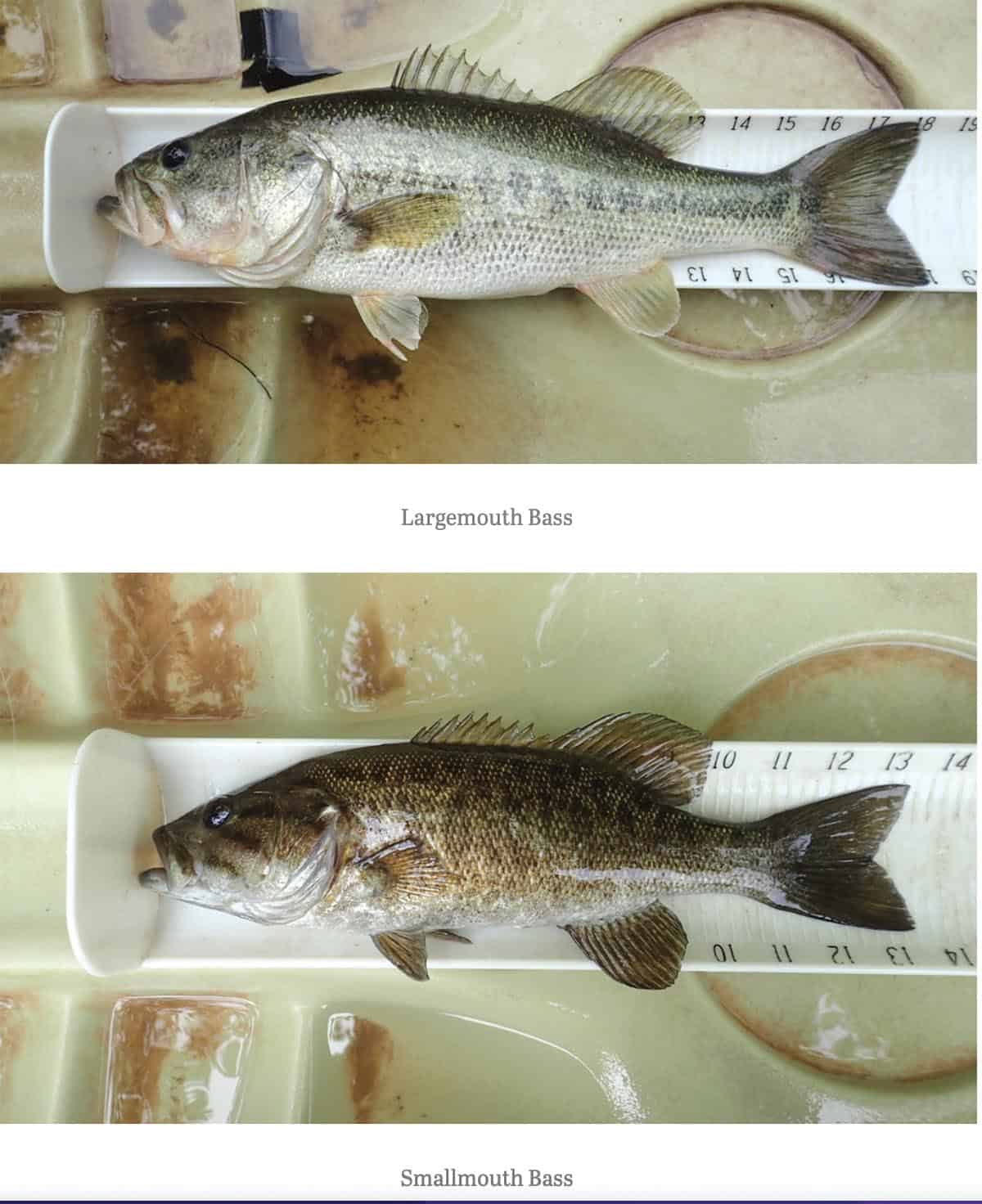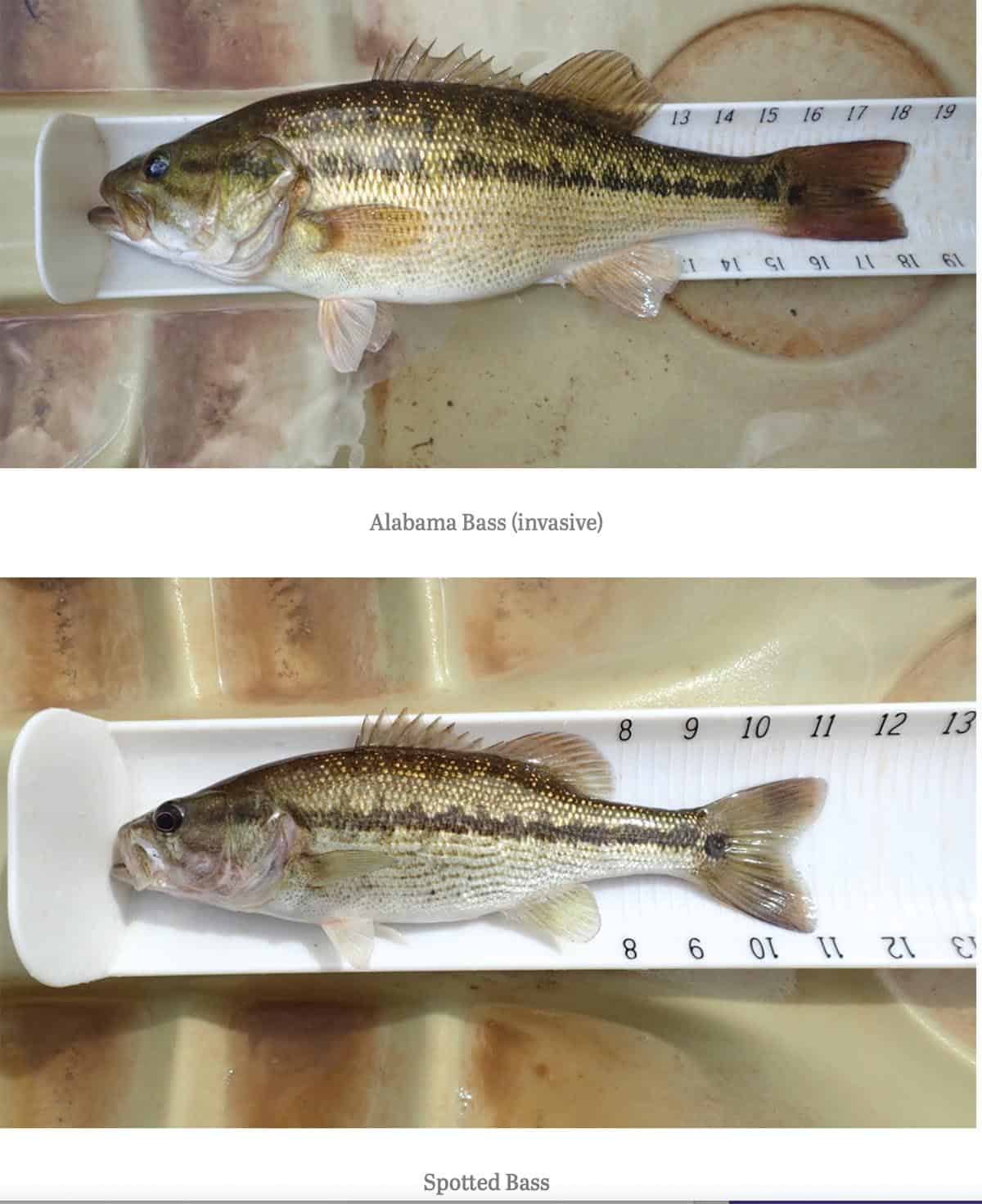Alabama Invasive –A fish story
By WILLIAM PAINE
The Patriot
Pulaski County, and the river that runs through it, presents the outdoor enthusiast with a variety of recreational opportunities but the most popular of these pastimes involves the catching of fish.
Local anglers, as well as those who arrive from other states, come to Claytor Lake and all points on the New River to fish for Black Bass and other favored fish varieties. There are several types of Black Bass but Largemouth, Smallmouth and Spotted Bass are the most predominant species in Virginia’s waterways.
 “Small Mouth in the New River are still doing good,” said Kristen Faull, a biologist with Virginia’s Department of Natural Resources. “Muskie are also looking really good on the New. We had a lot of natural reproduction in the last couple of years, so the Muskie population is growing.”
“Small Mouth in the New River are still doing good,” said Kristen Faull, a biologist with Virginia’s Department of Natural Resources. “Muskie are also looking really good on the New. We had a lot of natural reproduction in the last couple of years, so the Muskie population is growing.”
Overall, fish populations in Pulaski County waterways are in stable condition but biologists have lately expressed concerns over an unwelcome arrival.
“We do have a new invasive that’s kind of been pushing through, especially in Claytor Lake,” said Faull. “It’s the Alabama Bass, which is a southern strain of a Spotted Bass.”
 At the start of the 1800’s only two species of Black Bass were recognized, the familiar Largemouth Bass and the Smallmouth Bass. Though the Spotted Bass was considered a separate species by many in the early 19th Century, it wasn’t officially recognized as such until 1940.
At the start of the 1800’s only two species of Black Bass were recognized, the familiar Largemouth Bass and the Smallmouth Bass. Though the Spotted Bass was considered a separate species by many in the early 19th Century, it wasn’t officially recognized as such until 1940.
The Alabama Bass was originally classified as a Spotted Bass subspecies but was officially recognized as a separate species in 2008. The Alabama bass is native to the Mobile River Basin in Alabama, eastern Mississippi and northwestern Georgia but in the last few years, found its way to Claytor Lake.
“It arrived sometime around the mid-teens,” said Faull. “I previously worked in Tennessee, and they’ve been moving up to the Tennessee River in some of those reservoirs and now they’re up here.”
According to Virginia’s Department of Wildlife Resources, the Alabama bass can also be found in the New River downstream of Claytor Lake, Lake Gaston, Buggs Island Lake (Kerr Reservoir) Philpott Lake, Martinsville Reservoir, Diascund Reservoir, James River (Fall-Line area in Richmond) and the Chickahominy River.
How did this fish make its way from the deep south to the waters of Virginia?
“A lot of it is from local anglers spreading them,” answered Kristen Faull.
Why would an angler spread a non-native species of fish to a new body of water?
“Just because they like to catch them,” said Faull. “They probably think that they’re doing a good thing, kind of like they’re spreading the wealth.”
Despite being nonnative, the Alabama bass does have its admirers.
“People do like to catch them because they put up a pretty good fight and they can get pretty big in some systems,” Faull explained. “As far as eating them, it’s a Bass and people kind of shy away from eating Bass but if you are going to eat a Bass, you’re going to eat a Spotted Bass, you know?”
But introducing a new species has its downsides, and as of January 2021, the Alabama Bass was added to the Virginia Predatory and Undesirable Species List. According to the DNR, Alabama Bass are capable of outcompeting the native Largemouth Bass, which causes a decline in their abundance. For example, in Lake Norman, North Carolina, the relative abundance of Largemouth Bass decreased to less than 8% of their former abundance following the introduction of Alabama Bass.
The Alabama Bass is a different kind of threat to the Smallmouth Bass.
“They can hybridize with the Smallmouth, which leads to a lot of genetic swamping,” said Faull. “So, instead of having a pure Smallmouth or Alabama Bass, we see these hybrid fish. You could essentially lose Smallmouth genetics in this area, which is something we don’t like to do in natural resources.”
According to the DWR, this loss of genetically pure Smallmouth Bass populations has already occurred in the Chatuge Reservoir in Georgia and North Carolina and the Nottely Reservoir in Georgia. Genetic tests have confirmed that there are some Alabama Bass and Smallmouth Bass hybrids now living in Claytor Lake.
“It kind of leads to this genetic swamp, where nothing is a pure anything and they’re all mutts,” Faull continued. “You don’t want to accidentally extirpate a species out of the area, especially the Smallmouth Bass, which is one of the main species that people fish for around here.”
Additionally, the DWR claims that Alabama Bass grow to large sizes for a few years following their introduction but that this situation is short lived and occurs primarily when population densities are low. Once established, Alabama Bass populations often increase to the point where stunting occurs, resulting in a greater abundance of smaller Bass. As a result, fisheries could shift from being dominated by 2 to 3 pound Largemouth or Smallmouth Bass to being dominated by one-pound Alabama Bass.
It’s colder in Virginia than in Georgia, can these species exist long term in this cooler climate?
“This is as far north as they’ve gotten, so we’re still kind of trying to figure that out,” said Faull. “Right now, we’re just getting a grip on how far up or down the New that they are. There’s not a lot that we know to do yet because they look so similar to the other fish. That’s something that we’re still kind of working on but we definitely have genetic markers from Claytor Lake.”
Genetic markers are needed because it is quite difficult to discern the non-native Alabama Bass from the native Spotted Bass, as can be seen in the photo. According to an online source, one possible method of differentiating the two species is counting the “pored scales” (scales with holes) along the side of the fish. The Alabama Bass usually has 71 or more “pored scales” along its side, whereas Spotted Bass have 70 or fewer “pored scales” along its lateral line.
The DWR reminds anglers that it is illegal to stock fish into a public body of water without authorization. New regulations have made live possession of Alabama Bass unlawful outside of the body of water of catch. Violations of this regulation are a class III misdemeanor.
There is no bag or size limit on Alabama Bass and anglers are encouraged to harvest any that they capture.
Anglers who suspect they have captured an Alabama Bass should take a picture of the fish, clip off a thumbnail-sized portion of one of the pelvic fins and store the fin clip dry in an envelope. The pelvic fins are located on the bottom of the fish, just under the head. They should then either contact the DWR at fisheries@dwr.virginia.gov or at 804-367-1293.
Otherwise, biologists like Kristen Faull in Virginia’s Department of Wildlife Resources will continue to monitor the situation and keep doing what they do.
“We’ll be going out next week to collect Walleye brood stock because it’s spawning time for Walleye,” Faull explained. “Small Mouth spawn later in the Spring.”
The arrival of the Alabama Bass is a concern but Claytor Lake and the New River still have some of the best fishing in the country and with proper management, the waterways of the New River Valley this will continue to be a angler’s paradise for many years to come.
Happy fishing!

March 27, 2023 @ 12:09 pm
Evolution will happen regardless of what you want.